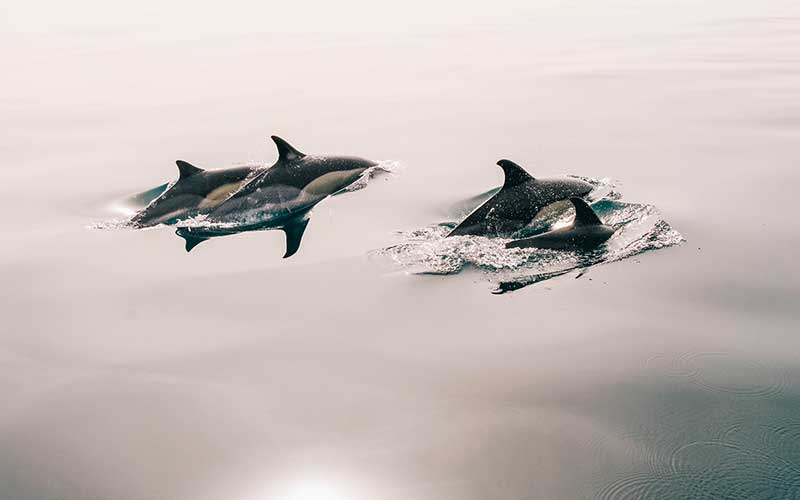Photographing wild dolphins
While attempting to photograph any wild animal is often a difficult undertaking. Photographing wild dolphins presents it’s own individual challenges. If you happen to be planning a boat trip or a swim with the dolphins, there are a few things you need to keep in mind to make sure you take advantage of every photographic opportunity.
The most important thing to remember is to let the dolphins approach you. Dolphins are very social creatures and seem to react favorably to interaction with humans, if allowed to do so on their own terms.
Your photographs will be much better if the dolphin is actually in an inquisitive mode. Nobody wants to see photos of dolphins fleeing in panic.
If you’re attempting to shoot the dolphins from a boat, odds are you’re going to end up in rough water at some point.
Remember to brace yourself and your camera equipment so neither you nor your equipment ends up in the water. The motion of the boat, as well as the speed at which dolphins can travel, will require using a fairly high shutter speed on your camera. ASA/ISO 100 or 200 film will help alleviate some of the graininess that will result from the higher shutter setting but achieving a balance between these two comes with practice. A lens filter will help to reduce glare and a motor drive is extremely helpful when the dolphins are extremely active.
A telephoto lens will be necessary as its often difficult to get to close to the dolphins from the boat. The best type of camera for this type of photography is a Single Lens Reflex (SRL) and either a Nikon or Canon body.
If you’re actually lucky enough to participate in a dolphin swim, you’ll want to use wide angle lenses. Dolphins, even the younger ones, are fairly large. and a lens with a narrow angle of view will require more distance to make sure the entire dolphin is included in the frame. Wide angles lenses will provide more control and flexibility with the sharpness and color saturation of the imagen
Obviously, if you are swimming with dolphins, a water proof camera will be needed, but there are many options for that which are not necessarily expensive cameras. You can find a waterproof housing for your own camera, or there are several waterproof cameras now, even digital, at really affordable prices.
If you need a camera for your trip, the recommended stores where I have purchase a cameras online with great results are:
They both have a great selection and prices and they both have great information to help you choose the right camera for your budget. Don’t get too excited! Quite often the experience of just being in the water with the dolphins will be so exhilarating that even the most talented photographer is reduced to simply snapping away with no thought to the actual composition of the photograph.
If you take the time to get in close with a wide angle lens, the resulting photograph will make the subject in the foreground appear disproportionately larger than the background. This technique can produce an amazing image. Changing angles on the dolphin can also add personality to your images. A picture of the dolphin in a side profile as well as one that captures the entire length of the creature can create an interesting collage of finished photographs.
When photographing dolphins, the use of a light meter is essential. Dolphins usually swim close to the surface which will require accurate settings of surrounding light conditions. The use of a strobe as fill lighting will also bring contrast to the dolphins features.
Regardless of how close you can actually get to the dolphin, using a few of the above techniques should guarantee an interesting array of photographs. If you’re patient and take the time to do a little practicing before your trip, you should be able to capture an extremely amazing opportunity with ease.

